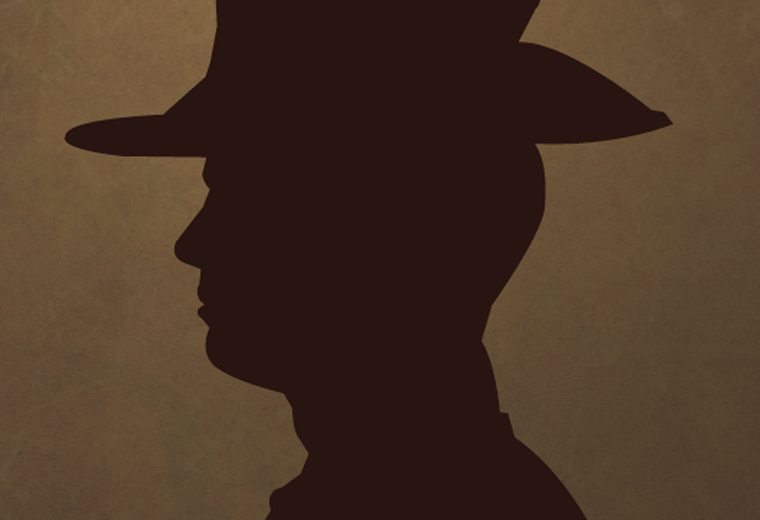The City of Canterbury Library holds World War 1 illuminated certificates in the Local History Collection. This is a photograph of the illuminated certificate for Private Frederick James Caton.
From 1915 onwards, but particularly in 1919 and 1920, there were joyous ‘Welcome Home” activities for returned servicemen throughout the Canterbury District. At these functions, Illuminated Certificates were often presented by the Mayor to the returned soldiers in thanks and appreciation.
The certificate reads:
The Mayor, Aldermen and Citizens of the Municipality of Canterbury
Herby place on record their thanks and appreciation for the conduct of Frederick James Caton
Who served his King and Country in the Great 1914-1918
In witness whereof the corporate seal of the
Municipality is hereby attached (by resolution by the Council)
in the presence of
Arthur Preston (Mayor)
J L Sutton (Town Clerk)
Information source: Canterbury’s Boys: World War I and Sydney’s suburban fringe.
Private Frederick James Caton
This World War I biography is sourced from Canterbury’s Boys: World War I and Sydney’s suburban fringe.
- Caton, Private Frederick James no.2582 1st Australian Pioneer Battalion 5th Reinforcements
- “Fulwood” Undercliffe Road, Undercliffe.
- Carpenter and Joiner
- Born Preston, England, son of John and Hannah Caton. Catholic. Other training: marine diver. Came to Australia at age 30. Six years and six months in the Royal Engineers. One brother in the British Army.
- Enlisted at Undercliffe 8/5/1916, aged 35.
- Married. Next of kin, Mrs Elizabeth Caton, wife, Undercliffe Road, Wanstead via Marrickville.
- SMH 28/6/1916 Farewell at Linga-Longa
- Embarked from Sydney 24/8/1916 per HMAT A68 Anchises.
- Killed in Action 26/10/1917, aged 35.
- Buried Belgian Battery Comer Cemetery, Ypres, grave 13.D.3.
AWM File IDRL 428 Letters to the Red Cross re Australian servicemen:
Private F. Kearyno.2634 1st Pioneers, Harefield, 24/1/1918:
He came over in the 5th Reinforcements to the 1st Pioneers. He was killed by a shell on 26/10/1917 at Ypres. I did not see him knocked, but was told by Private Wally Band, 1st Pioneeers, France. He saw Caton killed, and can give all details.
S.Whitmee, no.4C.D. Hurdcott 23/1/1918:
He was blown to pieces by a shell at Ypres on the Menin Road I could not say if he was buried I knew him well as we left Sydney together on 24/8/1916 on a boat called the “Anchises”.
C.R Bull no.2328 1st Pioneers, Hut 9, Westham, 25/1/1918:
I saw Caton being carried past us after he had been killed by a shell at Zonnebeke Road He was I think dead or nearly so, as he was on the stretcher, but I cannot say where he was buried.
A Archbold no.2568 1st Pioneers, Hut 9, Westham, 13/3/1918:
I heard Caton was killed on the Corduroy Road at Anzac Ridge and was buried at Belgian Battery Corner. I saw his grave with the cross erected
Private McCarthy no.3696, Ward 34, Harefield, 23/1/1918:
At Zonnebeke, he was killed by a bit of shell just in the back of his head. He was bending over working and it went under his helmet, killing him at once. An officer went up with a party to bury him but I did not see his grave.
Private W.E. Brown no.2713 1st Australian Pioneers, A4 4th London General Hospital, Denmark Hill, 16/2/1918:
I knew Caton. He was my chum. I saw his grave a short time after October 1917 in Belgian Battery Corner with a wooden cross over it with his name and number on. The cemetery is about two kilometres from Ypres Town and one kilometre from Poperinghe Road
Description: Rather dark
J.B. Flett no.2612 1 st Pioneers, Hut 88 Westham, 6/3/1918:
Caton was in C Company and was killed about 26/10/1917 by a piece of shell striking him in the neck at Ypres on a railway construction the first day after his rejoining.
He was brought back to camp at Belgian Chateau and buried in a little cemetery alongside the 1st Dressing Station Belgian Battery Comer and a cross was erected
The pavement of the Ypres-Zonnebeke Road was deeply covered in mud, and the 1st Pioneers were employed in digging it out and repairing it after 25 October 1917. They also remade “Smith’s Road” between Westhoek and Zonnebeke, creating a partial “corduroy” road of planks. On the day Private Caton died, it was raining and the men were being constantly bombarded with mustard gas.
(Summarised from the account in CEW Bean: Official history v. IV (1917) pp.930-933)
More information could be given to the AWM by Ashton Waterworth, “Selukwe” Undercliffe Road, Undercliffe.
Source: Canterbury’s Boys: World War I and Sydney’s suburban fringe.



